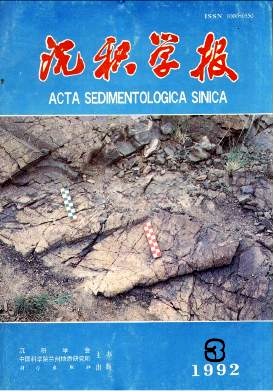Carbonate Diagenesis and Porosity Evolution
- Publish Date: 1992-09-10
Abstract: Carbonate deposition of China is characterized by multiages, multi- environments and multi-rock types. Under the influence of multi-orogenies, diagenetic environments are variable, superimposition of diagenesis is evident, diagenetic assemblage is complicated, and meteoric fresh water and burial diagenesis that closely related with the concentration of oil arid gas are extremely common. Detailed studies of diagenetic terrains' features, diagenetic assemblage, and diagenetic models of different times will be benifit to the prediction of oil-generating, storage and cover. Of all the diagenesis, fresh water dissolution, burial dissolution, dolomitization, first-generation cementation, degypsification, dedolomitization are diagenesis that protect or form various porosities. With the constraints of these diagenesis, secondary solution opening and cave, intergranular pore, intercrystal pore or intercrystal solution opening, solution fissure, etc, could be evolved in the rocks. The compaction, cementation, recrystalization and bruial infilling in the rocks are unfavourable to the conservation of primary porosities and the formation of secondary porosities. According to low content of trace element, such Sr and Mn, low negative δ~(13)C, poor cathodoluminescence and fabric of rocks, meteoric fresh water diagenetic environments can be defined, and hence, the marine, mixed-water and burial diagenetic environments can be differentiated. Different diagenetic environments are characterized by different diagenetic sequence and diagenetic assemblage. Types of porosities and reservoiring performance of rocks are also controlled evidently by diagenetic environments. Based on characteristics of rocks, minerals, geochemistry of trace elementes and marks of isotopic geochemistries stable carbon and oxygen, as well as cathodoluminescence of textural component, etc. of the diagenetic terrain, different diagenesis and their evolution extent can be differentiated. This paper take beach facies as an example, suggest a diagenetic model of beach facies on the basis of synthesized diagenesis of diferent kinds of shoat deposition and porosity evolution history. This model summarized rock fabrics, diagenesis, porosity types and identifying remarks, elc. and reflect the processes of diagenetic evolution of shoat depo,ition andreservoiring space formation. Diagenetic model can be used to eiaborate diagenetic evolution stages and patterns of any sedimentary body, demoristrate the diagenetic assemblage, porosity types, reservoiring performance of rocks, and to analyse diagenetic environment and deep study the diageneiic facles. At the same time, it can also be used to etrlarge the felld of oil and gas exploration, and to prediet. diagenetic trap and to evaluate potential reservoir.
| Citation: | Wang Yinghua. Carbonate Diagenesis and Porosity Evolution[J]. Acta Sedimentologica Sinica, 1992, 10(3): 85-95. |






 DownLoad:
DownLoad: